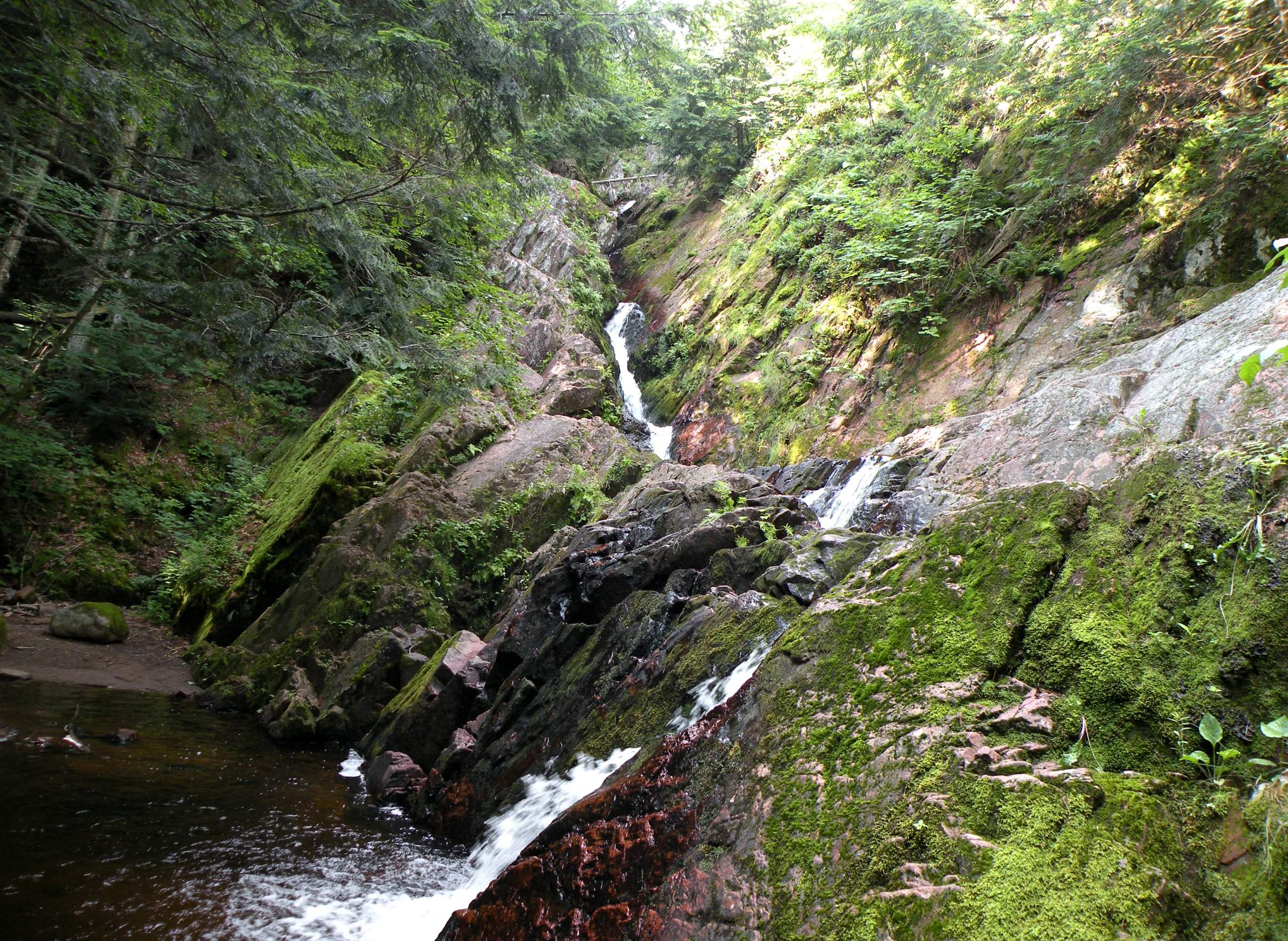
Morgan Falls is located in the Chequamegon-Nicolet National Forest, due south of Ashland.

Morgan Falls is located in the Chequamegon-Nicolet National Forest, due south of Ashland.
Wisconsin is often considered to be rich in groundwater. In 2015, people in the state used over 220 billion gallons of groundwater for public supply, agriculture and industry. Groundwater also provides flow to thousands of springs, streams, and lakes across the state.
In northern Wisconsin, these water resources are even more apparent. Lakes dot the landscape, making it a popular destination for outdoor enthusiasts. Abundant streams and springs provide habitat for groundwater-dependent species. However, a changing climate and increasing developmental pressures present new challenges for managing groundwater in this region.
Flooding swept across northern Wisconsin in July 2016, causing millions of dollars in damage and degrading surface water and groundwater quality. The growing frequency of such severe events underlines the importance of understanding Wisconsin's water resources in the face of a changing climate. A recent proposal to open a large-scale hog farm in Bayfield County provides another example of challenges related to drinking water.
A balanced and responsible approach to water use will be critical to maintain water quality and quantity as proposals for high-capacity wells for concentrated animal feeding operations and other types of development become more common.
A potentially vulnerable aquifer system
To complicate matters, groundwater in northern Wisconsin is not as abundant and invulnerable as is commonly perceived. The deep, porous sandstone and dolomite aquifer that provides groundwater for most of the state is absent in northern Wisconsin. Subsurface geology consists of glacially deposited sediments such as sand, silt and gravel overlying crystalline bedrock. Groundwater flows through pores in the glacial sediments, but in the bedrock, the pore spaces are very small and groundwater is generally limited to flowing through cracks and fractures.
Most water supply wells across northern Wisconsin are in shallow sand and gravel aquifers often found in valleys. The thickness and type of glacial deposits vary, however, and the sand and gravel deposits are not ubiquitous. Aquifer yields can be small where the glacial sediments consist of clay or where crystalline bedrock is near the surface. In these areas, precipitation is more likely to run off to surface water than seep into the ground — one of the reasons the recent flooding was so devastating. The lack of a deep bedrock aquifer also introduces concerns for groundwater quality, as shallow sand and gravel aquifers are more susceptible to contamination from the surface.
Getting a handle on northern Wisconsin's groundwater
Effective groundwater management in a region begins with understanding its hydrogeologic system. But the very remoteness that protects the resources in northern Wisconsin from contaminants introduced by people also poses challenges for studying the local hydrogeology. Well records commonly form the basis for hydrogeologic studies because they provide a glimpse into the underlying aquifer. Because many areas in northern Wisconsin remain undeveloped, there are large areas with no records, presenting difficulties for interpreting regional groundwater conditions.
In coordination with the U.S. Forest Service, a study by the Wisconsin Geological and Natural History Survey and the U.S. Geological Survey aims to tackle just this problem. The study, planned for publication in 2017, takes a multi-faceted approach to improve the understanding of groundwater in Wisconsin's Chequamegon-Nicolet National Forest where data are currently scarce.
The study intends to help answer questions about groundwater quantity, quality, distribution and vulnerability in this national forest in northern Wisconsin. As part of the project, a computer model was built to simulate the regional groundwater system. The model creates a water-table map showing where groundwater recharges and discharges. In addition to simulating current conditions, the model can be used to test future scenarios by simulating how streamflow and water levels could be affected by changes such as well pumping or drought.
The report will help the U.S. Forest Service manage water resources amidst a changing environment. Because of its regional context, the report can also be used as a platform to develop more detailed studies in other areas of northern Wisconsin to assess potential impacts and guide resource management.
Continuing data collection and research in northern Wisconsin is necessary to adequately understand the regional groundwater system and thereby manage it appropriately. This understanding will ultimately help stakeholders balance resource needs and uphold Wisconsin's reputation as a water-rich state.
Anna Fehling is a hydrogeologist at the Wisconsin Geological and Natural History Survey in the University of Wisconsin-Extension.